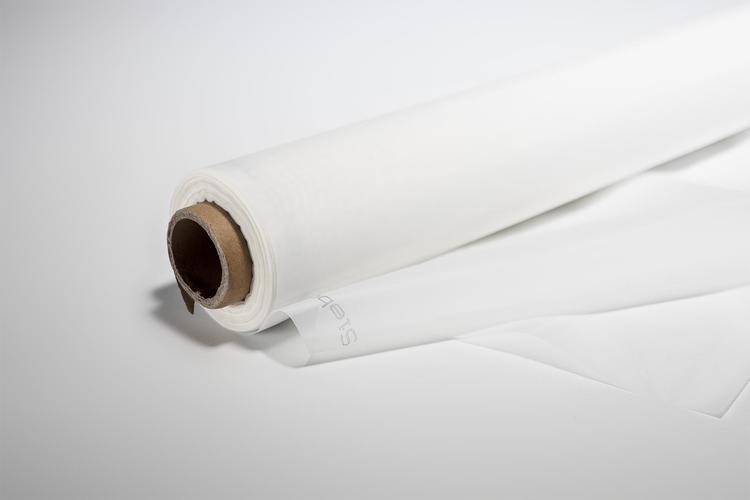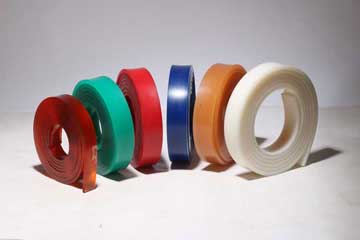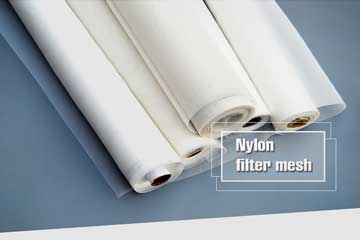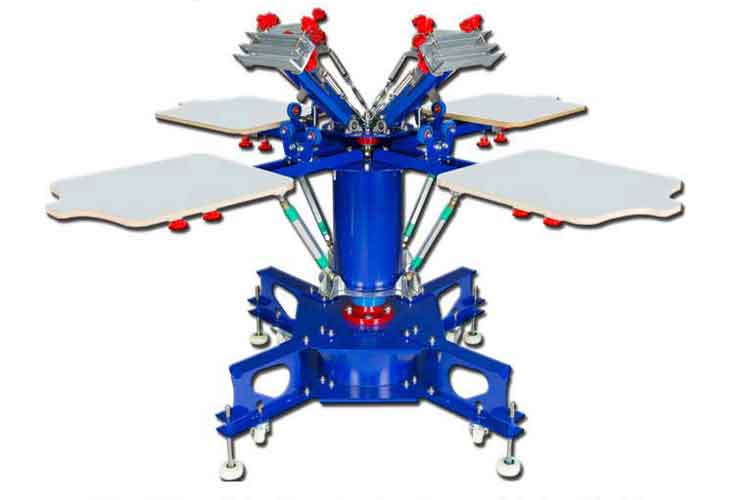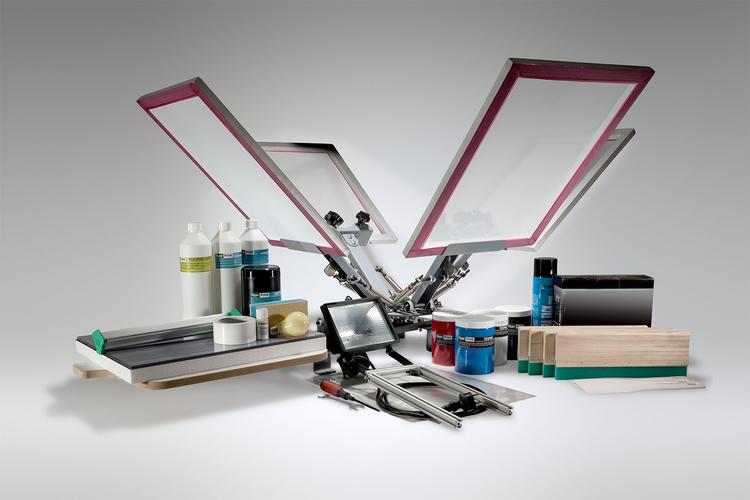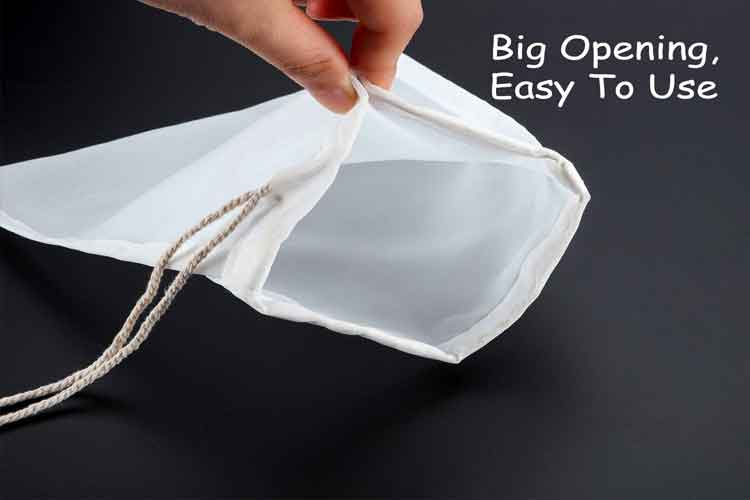Streamline Bulk Solids Removal with #2 Size, 50 Micron Polyester Felt Liquid Filter Bags
The #2 Size 50 Micron Polyester Felt Liquid Filter Bags, Polypropylene Ring are your go‑to solution for high‑flow, bulk‑solids removal in Size 2 housings. Their robust media, precise sealing, and seamless construction deliver reliable performance, protect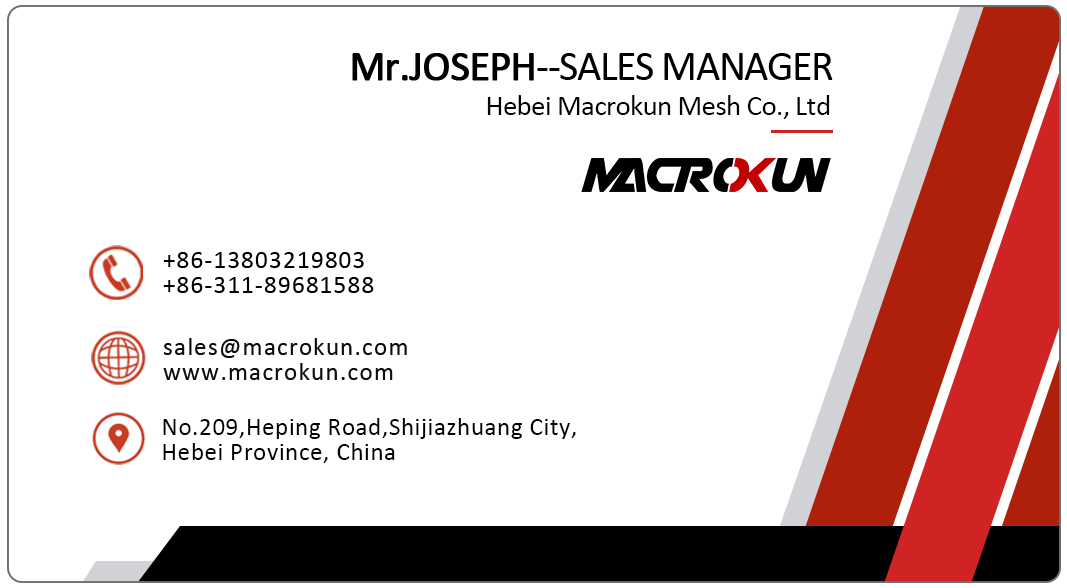
Capturing coarse particulates efficiently—such as sand, scale, weld spatter, or plant debris—is the foundation of any robust filtration train. Our #2 Size 50 Micron Liquid Filter Bags, constructed from durable polyester felt with a polypropylene “F” flange ring, deliver reliable depth‑filtration in standard 4″ × 10″ or 4″ × 20″ housings. Whether you’re protecting pumps and heat exchangers, clarifying process water, or extending the life of finer downstream filters, these 50 µm bags provide high flow capacity, low pressure drop, and broad chemical compatibility.
This guide follows a proven structure—market overview, product fundamentals, key features, selection guidance, maintenance best practices, reasons to choose our bags, illustrative use cases, and actionable next steps—to help you implement 50 µm bulk‑filtration with confidence and efficiency.
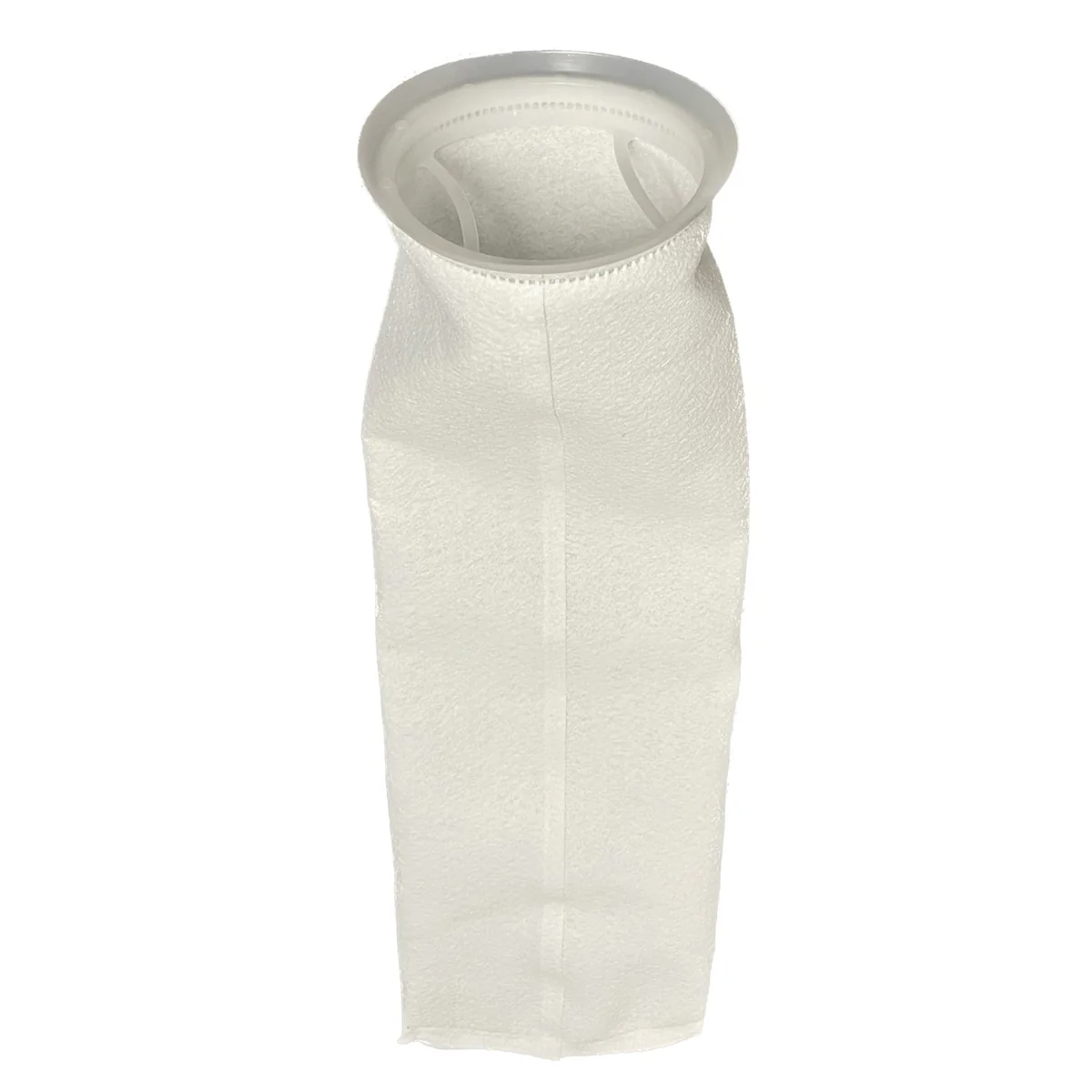
Market Overview: The Role of 50 Micron Pre‑Filtration
-
Protecting Downstream Equipment
Particles ≥50 µm can abrade mechanical seals, clog nozzles, and erode valve seats. By stopping these solids early, you minimize wear on pumps, UV lamps, and fine‑grade filters. -
Optimizing Process Efficiency
Bulk removal at 50 µm reduces load on finer cartridges or membranes, cutting consumable costs and extending maintenance intervals. -
Maintaining High Flow Rates
Many industrial and commercial processes require tens to hundreds of gallons per minute. Coarse‑micron felt bags sustain minimal head loss, ensuring smooth throughput. -
Versatility Across Applications
From cooling tower makeup and agricultural irrigation to beverage pre‑clarification and wastewater pretreatment, 50 µm bags adapt to wide pH ranges (2–12) and temperatures up to 180 °F. -
Simplified Inventory Management
Standardizing on 50 µm as a primary pre‑filter size streamlines stocking and rapid response to unexpected solids surges.
Product Fundamentals: Anatomy of a #2 Size 50 Micron Felt Bag
-
Media: High‑loft polyester felt engineered for nominal 50 µm retention (~85–95% of particles ≥50 µm), offering robust dirt‑holding without rapid clogging.
-
Bag Size: “Size 2” corresponds to a 4″ internal diameter and either 10″ or 20″ length (user’s choice), fitting all standard Size 2 housings—single, dual, or multi‑bag.
-
Seal Ring: Polypropylene “F” flange collar molded for precise, bypass‑free sealing on housing ledges in aqueous, mildly acidic, or alkaline fluids.
- Construction: Ultrasonic or heat‑welded seams eliminate stitch‑holes, supporting up to 75 psi differential pressure and preventing fiber migration.
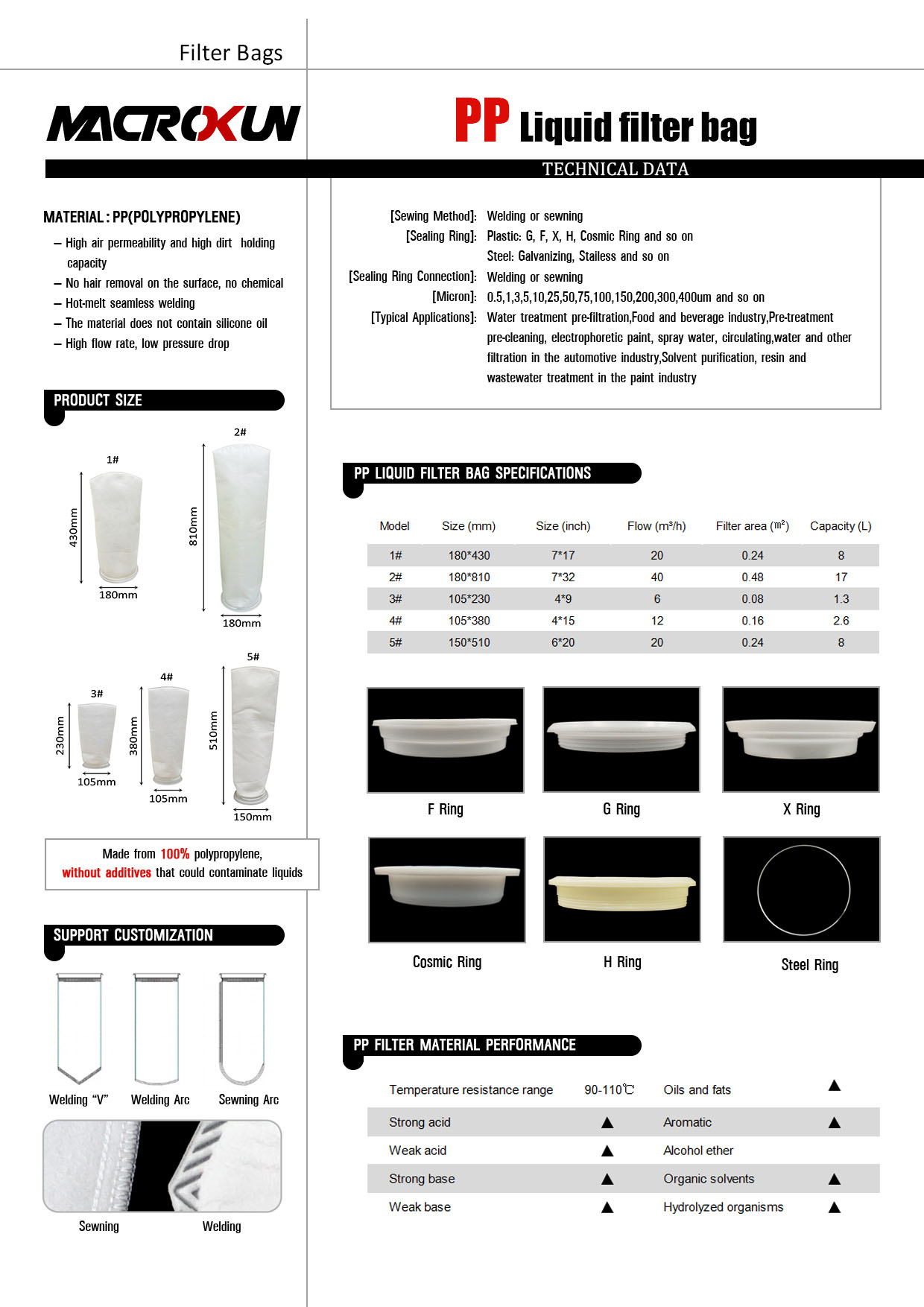
Key Features of Our 50 Micron Polyester Felt Bags
1. Efficient 50 Micron Retention
-
Nominal Rating: Captures the majority of larger particulates—sand grains, rust flakes, algae clumps—before they harm downstream components.
2. Durable Polyester Felt Media
-
High‑Loft Design: Depth‑filtration matrix traps debris throughout its thickness, maximizing dirt capacity.
-
Chemical & Thermal Stability: Tolerant of pH 2–12 streams and temperatures up to 180 °F.
3. Polypropylene “F” Flange Ring
-
Secure Seal: Rigid collar ensures all fluid passes through the media, eliminating side bypass.
-
Broad Compatibility: Resistant to most aqueous chemistries, preserving ring integrity over time.
4. Seamless Weld Construction
-
Zero Stitch‑Hole Leakage: Ultrasonic sealing bonds layers flawlessly for no bypass or fiber release.
-
Structural Integrity: Seams withstand high differential pressures without failure.
5. Flexible Length Options
-
10″ & 20″ Bags: Shorter lengths suit confined housings or lower flows, while longer lengths double media area and service life.
6. Low Initial Pressure Drop
-
Optimized Fiber Loft: Balances coarse retention with minimal starting ΔP, safeguarding pump efficiency from the first use.
Selecting the Right Configuration
A. Match Micron Rating to Solids Profile
-
Heavy Debris Streams: 50 µm bags excel at trapping visible particulates and protecting finer filters.
-
Pre‑Polishing Step: Insert ahead of 10 µm or 5 µm stages to extend their service life.
B. Confirm Flow & Housing Requirements
-
Flow Capacity: 10″ Size 2 bags handle ~10–15 GPM; 20″ bags handle ~20–30 GPM per bag. Use multi‑bag housings for higher throughput.
-
Pressure Constraints: Ensure pumps support the required backpressure; bags rated to 75 psi differential.
C. Validate Chemical Compatibility
-
Process Fluids: Polyester felt and polypropylene ring withstand aqueous, mild acid/base streams. For strong solvents or extreme pH, consult alternate media.
-
Sanitary Needs: For food, beverage, or pharmaceutical, choose FDA‑grade felt and follow certified manufacturing.
D. Determine Maintenance Strategy
-
Disposable: Single‑use bags simplify changeouts in sanitary or hazard‑controlled environments.
-
Reusable: In lower‑risk streams, gently back‑flush or rinse, then inspect media before reuse.
E. Ensure Proper Sealing & Support
-
Gasket Match: Verify housing O‑rings or gaskets align with F‑flange collar dimensions.
-
Support Cages: Confirm internal baskets fit and support bags without collapse under flow.
Maintenance Best Practices
1. Differential Pressure Monitoring
-
Install Gauges: Track upstream and downstream pressure to detect media loading early.
-
Changeout Threshold: Replace bags when ΔP reaches 15–20 psi to avoid bypass or system strain.
2. Proper Bag Changeout
-
Operator Protection: Use gloves and changeout tools to avoid contact with greasy or contaminated bags.
-
Housing Cleaning: Wipe down internals during each change to remove settled debris and maintain seal surfaces.
3. Disposal & Cleaning Options
-
Non‑Hazardous Waste: Dispose per facility guidelines; rinse off large debris if regulations allow.
-
Hazardous Streams: Follow environmental and safety protocols for contaminated media disposal.
4. Seal & Housing Care
-
Inspect Gaskets: Replace worn or damaged seals to ensure leak‑free operation.
-
Cage Maintenance: Clean support baskets to prevent solids bridging and ensure even flow.
5. Documentation & Optimization
-
Service Logs: Record installation dates, ΔP readings, and volume processed to refine change schedules.
-
Performance Checks: Periodically sample effluent turbidity to confirm retention efficiency.
Why Choose Our 50 Micron Felt Bags?
-
Balanced Retention: Nominal 50 µm rating effectively protects downstream assets while maintaining high flow.
-
Durable Construction: High‑loft polyester felt resists tearing and chemical attack.
-
Reliable Sealing: Polypropylene F‑flange collar delivers bypass‑free operation.
-
Seamless Integrity: Ultrasonic seams prevent stitch‑hole leakage and fiber migration.
-
Flexible Sizing: 10″ and 20″ lengths fit all Size 2 housings.
-
Rigorous QC: Batch‑tested for retention, flow, and dimensional accuracy to meet ISO and industry standards.
Illustrative Use Cases
-
Cooling Tower Makeup Water
An HVAC plant filters makeup water through 50 µm bags, trapping sand and biological debris before chemical treatment—extending chemical feeder life and reducing fouling. -
Industrial Rinse Water
A fabrication shop uses 50 µm bags to remove weld spatter and metal fines from rinse loops, safeguarding recirculation pumps and prolonging downstream cartridge life by 70%. -
Agricultural Irrigation
A greenhouse filters nutrient solution through 50 µm bags, preventing emitter clogging and ensuring even water distribution to crops. -
Beverage Pre‑Filtration
A juice producer employs 50 µm felt bags to catch pulp and fruit solids before finer polishing stages—protecting UV lamps and membrane filters.
Summary and Next Steps
The #2 Size 50 Micron Polyester Felt Liquid Filter Bags, Polypropylene Ring are your go‑to solution for high‑flow, bulk‑solids removal in Size 2 housings. Their robust media, precise sealing, and seamless construction deliver reliable performance, protecting downstream equipment and streamlining your filtration train.
Next Steps:
-
Assess Solids Profile: Identify particle size distribution and volumes in your process.
-
Select Bag Length: Choose 10″ or 20″ Size 2 bags based on flow requirements and housing dimensions.
-
Install ΔP Monitoring: Equip housings with gauges to optimize change‑out timing.
-
Standardize Changeout Procedures: Train personnel on safe, efficient bag replacement and housing maintenance.
-
Track Performance Metrics: Monitor effluent clarity, equipment uptime, and consumable usage to validate filtration ROI.
Incorporate these 50 µm felt filter bags into your process to ensure consistent, contaminant‑free fluids, extend equipment life, and maintain smooth operations day after day.
Pre:Robust Bulk Filtration with #2 Size, 25 Micron Polyester Felt Liquid Filter Bags
Next:Robust Coarse Filtration with #2 Size, 100 Micron Glazed Polypropylene Felt Liquid Filter Bags
Tags:
